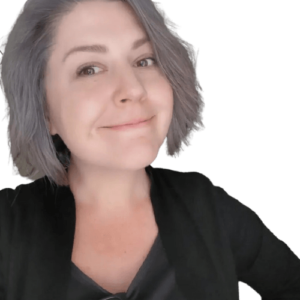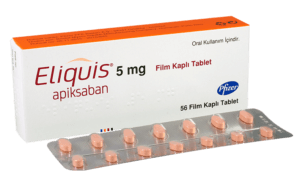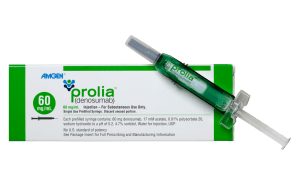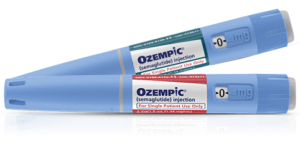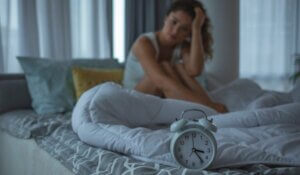
With a focus on addressing the problems that can come from sleep deprivation, the program highlights the relationship between sleep health, mental health, and physical health while promoting strategies for better management. Through collaborative efforts spanning medicine, education, social media, and other avenues, the aims of the Sleep Day Committee of the World Sleep Society are clear: healthy sleep is essential, and it’s time more people realized it.
Some of the most important causes of poor sleep health are:
Insomnia
Insomnia happens when someone has trouble falling asleep or staying asleep, which can affect how they feel or function during the day. Short-term insomnia can be triggered by things like illness, stress, sadness, physical pain, or even jet lag from travel, which can disturb the natural circadian rhythm that helps people sleep at night and stay awake during daylight. These symptoms often improve once the cause goes away. However, for some people, insomnia can become a long-term issue. Developing healthy sleep habits can make a big difference, but other non-drug treatments are highly effective if that’s not enough. One option is Cognitive Behavior Therapy for Insomnia (CBT-I), which can be done with a trained therapist or through an online program.
Snoring
Snoring is a widespread issue that tends to get worse with aging and weight gain, both of which contribute to poor sleep health. When someone snores, it can disrupt their partner’s sleep, leading to frustration for both individuals. Frequent snoring may also be a sign of obstructive sleep apnea.
Obstructive Sleep Apnea (OSA)
Sleep apnea occurs when a person’s breathing is repeatedly interrupted during sleep due to a blockage of the airways. This condition often causes loud snorting and causes the person to briefly stop breathing, interrupting their sleep throughout the night, although they usually don’t remember waking up. These constant interruptions can lead to extreme tiredness during the day. Effective treatments are available, including lifestyle changes like losing weight or reducing alcohol intake, as well as using dental devices or Continuous Positive Airway Pressure (CPAP) machines to maintain airflow. Most recently, Tirzepatide for the management of sleep apnea has been approved for use.
People with sleep apnea can show a variety of symptoms, such as loud snoring, feeling tired during the day, low energy, mood swings, trouble staying asleep, pauses in breathing while sleeping, morning headaches, or frequently waking up to use the bathroom. The most reliable way to diagnose sleep apnea is through an overnight sleep study where external monitors record how a person goes through each stage of sleep.
Comorbid insomnia and sleep apnea (COMISA)
COMISA, or comorbid insomnia and sleep apnea, happens when someone has both insomnia and obstructive sleep apnea at the same time. This condition can lead to trouble falling or staying asleep, along with periods where breathing stops during sleep. People with COMISA often deal with more severe issues, such as poor daytime functioning and mood problems, compared to those who only have one of these conditions.
Sleep Hypoventilation
The brain controls the muscles that help us breathe by sending signals to them. During sleep, these signals become weaker. For people with weak breathing muscles or extra strain from conditions like severe lung diseases or obesity, this can cause their breathing to slow down too much while they sleep. This condition is called sleep hypoventilation. Without treatment, it can lead to serious problems like difficulty breathing or heart failure during the day. However, special devices that support breathing during sleep can effectively treat this. This type of treatment is non-invasive positive pressure ventilation (NPPV). NPPV is a form of mechanical ventilation designed for home use, helping individuals breathe more fully and maintain proper oxygen levels, particularly during sleep.
Restless Legs Syndrome (RLS)
Restless legs syndrome causes an unpleasant sensation in the legs that creates an overwhelming urge to move them, which is only relieved by movement. The severity often changes throughout the day, with symptoms usually being worse during the evening and early morning hours. For some individuals, it can significantly disrupt their sleep. In some cases, the condition may be linked to low iron levels in the body. Fortunately, there are several medications available to help manage the symptoms. Dopamine precursors such as Stalevo may be prescribed, or dopamine agonists such as Requip or Mirapex.
Bruxism
Teeth grinding during sleep, also known as bruxism, is a common condition that many people experience. If left untreated, it can lead to long-term damage to the teeth and sometimes cause discomfort in the jaw. However, most individuals with this condition are unaware that it’s happening. Using dental guards at night may be recommended to help protect the teeth and prevent further harm. Some studies have found that Botox injected into the jaw may be a viable treatment for bruxism, though the research is limited.
Narcolepsy
Narcolepsy is a condition that affects about 1 in every 2,000 people. It happens if the brain has difficulty controlling when a person is awake or asleep. People with narcolepsy often feel very sleepy during the day, even when they’ve had enough rest, but their nighttime sleep can also be disrupted. They may also experience hallucinations, which occur when they are falling asleep or waking up. Another common symptom is sleep paralysis, where a person wakes up but is temporarily unable to move. Some may also experience cataplexy, a sudden and brief loss of muscle strength triggered by strong emotions, such as laughter. However, not everyone with narcolepsy experiences all these symptoms. Treatments, such as medications, can be very effective in managing the condition, including stimulants like Provigil and Ritalin to reduce daytime sleepiness.
Sleepwalking
It’s normal to walk and talk while we’re awake. However, some people do these things while they’re asleep. This happens when someone only partially wakes up during sleep. It’s more common in children, and these issues often disappear as they grow older, though not always. In some cases, more complex behaviors, like binge eating or engaging in sexual activity, can occur during sleep. These behaviors can cause embarrassment or create problems for both the person experiencing them and their partner. Fortunately, there are effective treatments available to address these issues. Treatment options for sleepwalking can include several approaches. If sleepwalking is caused by lack of sleep or another health issue, doctors may focus on treating that first. If a medication is believed to be the cause, the doctor might adjust or change it. Another technique is called anticipatory awakenings, where the person is woken up about 15 minutes before they usually start sleepwalking and kept awake for a few minutes before going back to sleep.
Medication or supplements like The Sleep Pack may be prescribed to calm the nervous system. Learning self-hypnosis from a trained professional can also help. This technique uses deep relaxation to help people control unwanted behaviors during sleep.
Therapy or counseling could be useful as well. A mental health professional can teach methods to improve sleep, reduce stress, and practice relaxation or self-hypnosis techniques.
Night terrors
Night terrors are episodes that occur when a person doesn’t fully wake up and experiences fear and terror. They are more common in children than in adults and can be upsetting for both the individual experiencing them and those nearby. They may also lead to anxiety about sleeping. Poor sleep habits can increase their frequency, but counseling usually helps improve the situation. Night terrors can look different for different people, but it is often described as a feeling of intense fear or dread, accompanied by physical symptoms such as rapid breathing and sweating. In some cases, the person may even scream or thrash around in their sleep.
Rapid Eye Movement Behavior Disorder
There are different types of sleep, which are divided into different stages, and most dreaming happens during Rapid Eye Movement (REM) sleep. During this stage, the muscles in the limbs are normally very relaxed. However, in a condition called REM sleep behavior disorder, the muscles stay active. This causes people to act out their dreams physically, sometimes with sudden or violent movements. This can lead to injuries for both the person and their sleeping partner. If a person has severe symptoms, a doctor might recommend medication to help. There are no FDA-approved drugs made just for rapid eye movement behavior disorder, but research shows that medicines like Circadin can sometimes help reduce symptoms.
Prioritizing sleep health is more than a personal commitment; it’s a necessity that impacts all areas of well-being. By promoting sleep, including medicine education, and fostering discussions about healthy sleep, we can lessen the burden of sleep problems.
 FAQs
FAQs
How do I know if I have insomnia?
Insomnia may be affecting you if you often struggle to fall asleep or wake up multiple times throughout the night. You might spend long periods lying awake or wake up too early and find it impossible to fall back asleep. Even after a full night’s rest, you may still feel exhausted. Despite feeling tired, napping during the day might be difficult. Poor sleep health coming from insomnia can also leave you feeling irritable and fatigued and make it hard to focus during the day.
What causes insomnia to start?
Stress about school, work, relationships, finances, or the loss of a loved one can increase the likelihood of developing insomnia. Anxiety about falling asleep or constantly checking the clock can also contribute to or worsen sleep difficulties.
What disorder makes you sleep during the day?
Hypersomnia is a disorder characterized by excessive daytime sleepiness, even after getting sufficient or extra sleep. People with this condition often find themselves falling asleep multiple times throughout the day.
How little sleep can you survive on?
The exact length of time humans can survive without sleep remains unknown. However, severe symptoms can start to appear after just 36 hours without at least a few hours of restful sleep. These symptoms include impaired thinking, poor judgment, and difficulty speaking.

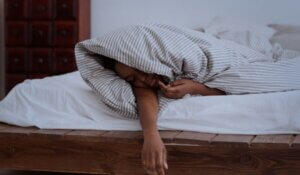
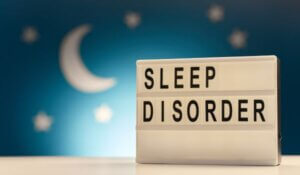 FAQs
FAQs